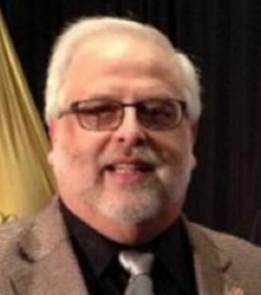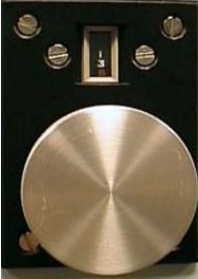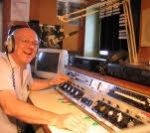Running Your Own Successful Technical Support Company

[April 2017] While “Don’t Touch That Dial!” has been a constant plea of radio and television stations over the decades, there is a much more important use of the phrase, one which Jerry Brown is ready to share.
Quite often, our first contact with a new client comes because they have a major problem – perhaps being off the air – that their current chief engineer does not (or cannot) solve.
This is both a challenge and an opportunity to shine. It is a challenge in that you are immediately assessed in a spotlight as you enter the facility. Especially if the station is off the air, everyone is anxiously watching to see how fast you can diagnose the problem and, with a flick of the right switch, put them right back on the air.
On the other hand, for many reasons your real opportunity in such a situation is to present yourself as a professional who can rapidly and efficiently diagnose problems and recommend the right solutions.
Avoid the Temptation
No matter how you look at it, there is one key thought in this article that I want to offer and stress its importance. Feel free to repeat after me: “Don’t Touch That Dial!”

Picture a “Do Not Touch” Sign
Now that I have your attention, let us discuss the reasons why not touching dials (or cranks, switches, or any other controls) is the 2 most basic troubleshooting technique you can learn and should practice – and how your attention here will provide you with respect from your clients and a good income
However, as we do explore the concept, I promise you we are not going to return to those days of yesteryear, Personally, I am not faster than a speeding bullet, nor do I have a trusty steed named Silver! Indeed, many of you younger folks might even wonder what does all that mean?
Simple: I have lived a long time and done a lot of things. But, most of all, I have seen lots of changes in the industry of which I have been in love with since I was 8. Some of these changes have been good but a lot of them actually were bad – and still are.
Nevertheless, we will not sit around and pine for days gone by and wonder what if. My purpose is to pass along to the next generation of radio engineers the things I have learned the hard way.
First Things First
As I have stated, the very first thing I learned was: Don’t Touch That Dial! I mean each and every dial, until you have a true understanding of its function, action, and interactions.
Upon entering any facility, whether to make your weekly (monthly? quarterly?) calibrations and checks or to troubleshoot, you really do need to regularly record the settings of all the dials, switches, and controls. If they have a counter, note the number, if they have only a position, their position, if it is only “on or off,” whether it is on or off.
Although that sounds like a lot of work – especially for directional stations with many antennas – it really is made much easier these days, you pull out your phone and take a picture. That way, no matter what you do nor how you do it, you can know for sure exactly where you started. (I also strongly encourage you to take more photos along the way as you work.)
Get Ready to Touch Something
Whether you have pictures, physical drawings, or handwritten notes, you will find them especially important if you are going to take off coverings, panels, or open up a piece of equipment.
Furthermore, I always recommend carrying some small containers, jars, parts drawers, etc. in your tool kit, in an organized matter, so you can store the removed screws, bolts, nuts, washers, fasteners etc. Be sure to keep a good list of parts and keep then separate.
I still carry a pack of 3 x 5 index cards, which allows me to make a quick label for the part and where it came from. Set the card in the container or the container on the card. This will save you a lot of time and worry about where that last nut may be – not lying on a shelf next to the PA!
These are among the “Best Practices” I adopted from the medical profession. Just think for a moment about the preparation, care, attention to detail, checks, rechecks, and balances in an operating room.
“HURRY IT UP!”
Of course, sometimes the station where I have been called is off the air, and there is just a lot of pressure to get it back on as soon as possible.
Yet, consider: when the surgeon is repairing your punctured aorta you want him to be fast, but not be sloppy at your expense. The same is true for your engineering practice: work on the balance between fast and good.
Yes I called it a practice. And, I will explain this, too to you as we move through this guide.
But first, let us do a quick review:
- We have discussed developing Best Practices for your Engineer Practice.
- Our first action is never turning a knob or crank.
- Take pictures as you go.
- Know where any and all parts you remove are located. Carrying some small containers helps a lot.
- There is something about “practice” in there.
Best Practices
At this point, you probably want to grab a knob or two and get turning. And that is exactly why we need to stop and discuss Best Practices some more – before doing anything.
True, some governmental agency may try to lay down a list of “Best Practices” (as if bureaucrats actually had a clue). We want “Best Practices” to be a positive solution – what our experience tells us will solve the problem at hand. This approach will usually reduce the number of surprises we encounter.
You are invited to take a piece of scratch paper and note some ideas pertinent to your facility as you get ready for Part 2.
Protocols for Best Practices
Part 2 will focus on Best Practices and Protocols for putting them into action.
The way it works is that once you understand what has to be done, the protocol associated with the situation will tell you what practices need to be initiated. And that is more than half the way to success. More next time.
– – –
Jerry Brown is the President of Broadcast Support Group, based in Oxford, North Carolina. You can contact Jerry at: jerry.brown@broadcastsupportgroup.com
